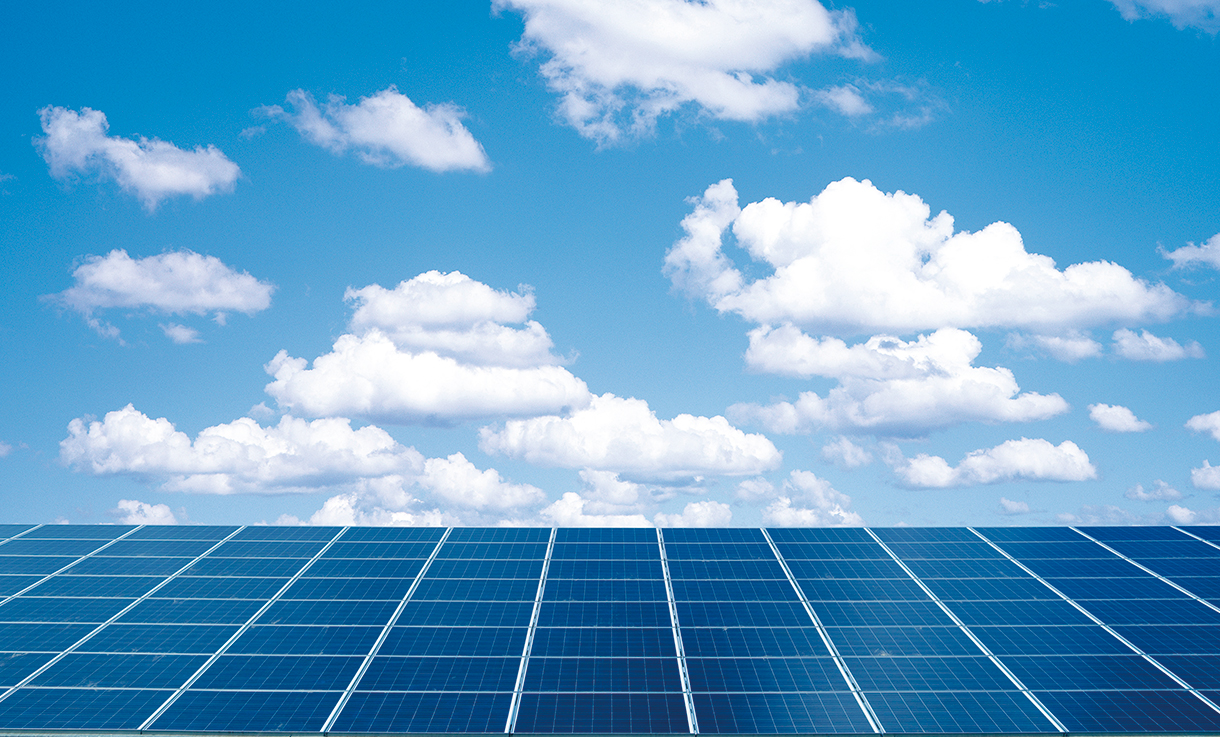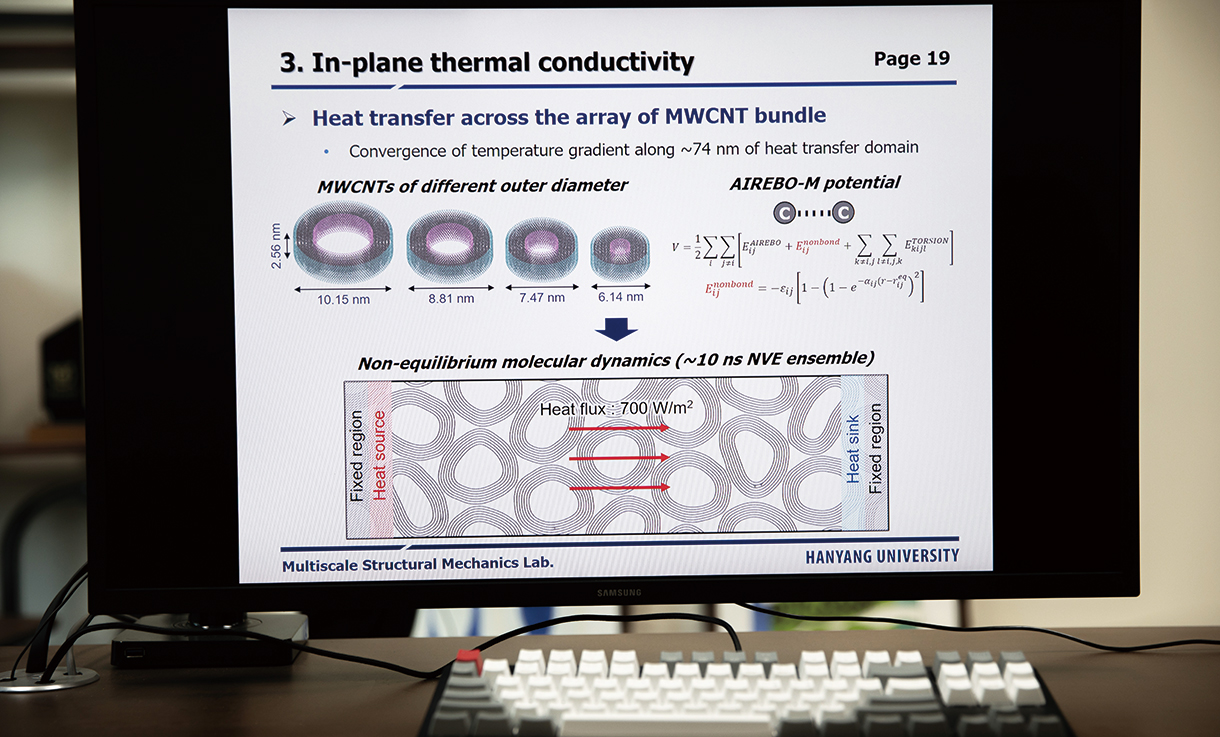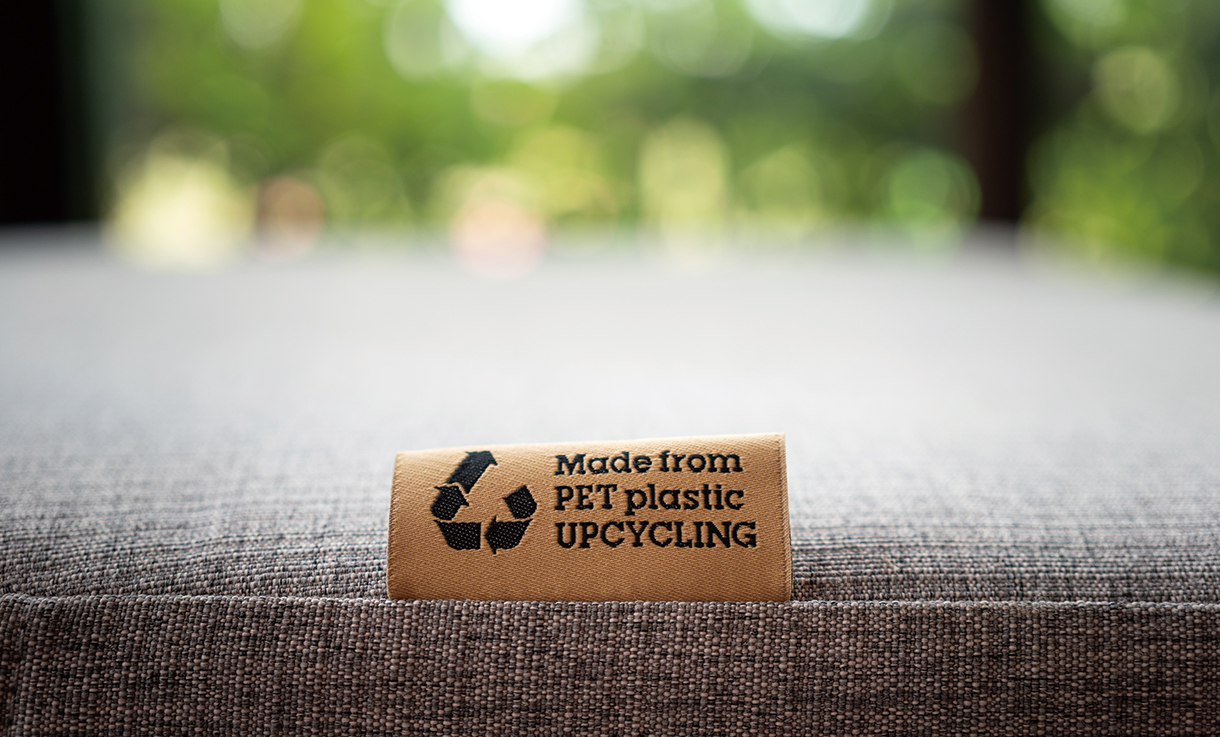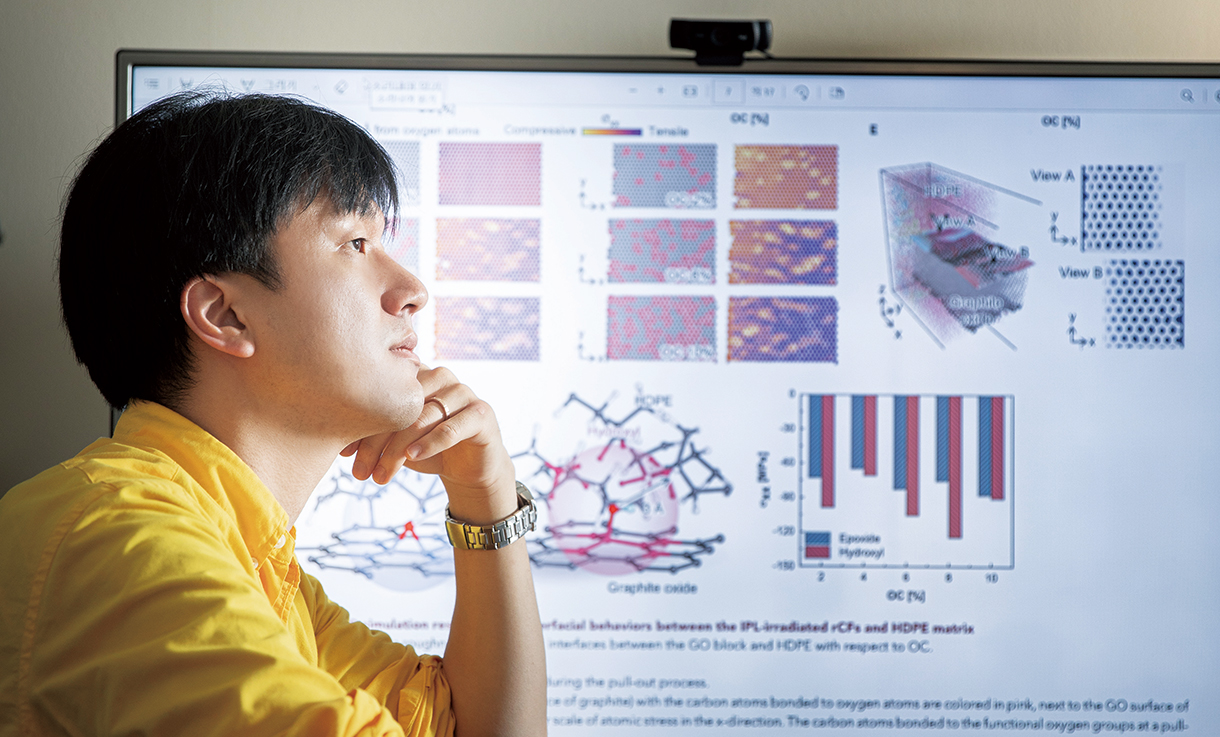

Story
재생 연구 발전의 기반 되는
‘멀티스케일 모델링’
“Multiscale Modeling,”
the Basis for Regeneration Research Development
ERICA캠퍼스 기계공학과 최준명 교수
Prof. Joonmyung Choi, Department of Mechanical Engineering at ERICA Campus
- 글 박영임
- 사진 손초원
- Writing Park Yeong-im
- Photograph Son Cho-won
Scroll Down
Multiscale modeling, which predicts material properties to design optimized processes through computer simulations, is an essential process for studying the renewing method of materials. Recently, Professor Joonmyung Choi participated in research on recycling carbon fibers waste to manufacture floating solar panel structures, and developed a process for re-forming the surfaces of waste carbon fibers to the level of newly produced ones. This can also be applied to other materials that are discarded.

폐탄소섬유와 고분자 간 결합 입증
최준명 교수와 한국생산기술연구원 공동연구팀이 버려지거나 저품질의 탄소섬유를 재활용하는 업사이클링 기술로 해상태양광 부력체를 제조하는 기술을 개발했다. 삼면이 바다로 둘러싸인 우리나라에서 해상태양광 발전은 주목받는 신재생에너지다. 발전시설을 바다에 띄우려면 해상부력체를 사용해야 하는데 현재 사용하는 스티로폼 부력체는 쉽게 부식돼 유지보수 비용이 많이 들고 미세 플라스틱을 야기하는 문제가 있다. 그래서 한국생산기술연구원 연구팀은 가볍고 내구성이 좋은 탄소섬유에 주목했지만, 워낙 고가이다 보니 버려진 탄소섬유를 활용하는 방안을 궁리했다. 문제는 폐탄소섬유는 표면이 거칠어져 고분자로 코팅했을 때 쉽게 경계면이 떨어져 나간다는 것. 연구의 초점은 폐탄소섬유의 표면을 생산 직후의 탄소섬유 수준으로 개질하는 데 맞춰졌다.
그러던 어느 날 연구팀은 우연히 탄소섬유 표면에 빛을 노출시켰을 때 탄소섬유와 플라스틱 수지 간 표면 결합력이 높아진다는 사실을 발견했다. 만약 이 방식으로 탄소섬유를 재활용할 수 있다면 저렴한 해상태양광 부력체를 제조할 수 있는 것이다. 연구팀은 최준명 교수를 찾았다. 우연한 발견이 우리 실생활에서 유용한 쓰임이 되기 위해서는 그 원리를 규명하고 성능을 높일 수 있는 조건을 찾아야 하는데 최준명 교수의 연구 분야가 컴퓨터 시뮬레이션을 통해 원리를 밝히고 최적의 공정 조건을 설계하는 것이기 때문이다.
“폐탄소섬유 표면에 적정한 출력의 제논 램프를 쏘이면 산소가 활성화되면서 폴리에틸렌 고분자와 화학적 결합력이 높아집니다. 우리 연구팀은 해당 공정에 의한 산소 그룹의 화학적 결합력이 실제 고분자와의 접합력을 높일 수 있는지 원자 수준의 시뮬레이션으로 실증했습니다. 계산으로 얻어진 고분자와 폐탄소섬유 사이의 결합 강도는 실제 공정을 통해 측정한 값과 일치했으며, 표면에 존재하는 산소 작용기들이 실질적으로 이웃한 고분자 사슬들을 강력하게 붙들고 있는 모습이 시뮬레이션으로 관찰됐습니다.”
이를 통해 최적의 공정 조건을 찾은 연구팀은 폐탄소섬유의 접합력이 생산 직후의 95% 수준으로 회복되는 것을 확인했다. 이를 활용하면 기존보다 20% 이상 저렴하게 해상태양광 부력체를 제조할 수 있다. 연구팀은 전북 새만금방조제 내해에서 현장 실증을 추진 중이다. 더불어 본 기술을 나노분말 및 탄소나노튜브 등 다른 소재에도 적용하는 방안을 연구하고 있다.
Cohesion between waste carbon fibers and polymers
The joint research team of Professor Joonmyung Choi and the Korea Institute of Industrial Technology developed technology to manufacture floating solar panel structures with upcycling technology that reuses waste and low-quality carbon fibers. In South Korea, a peninsula surrounded by the sea on three sides, offshore solar power generation is renewable energy that is drawing keen attention. In order to float power-generation facilities on the sea, floating structures are needed. The Styrofoam structures currently used are easily corroded, resulting in high maintenance costs and microplastics. Therefore, the research team at the Korea Institute of Industrial Technology turned their attention to lightweight and durable carbon fibers, but since they are expensive, they devised a way to use waste carbon fibers. The problem is that waste carbon fibers have rough surfaces that when coated with polymers result in the interface easily falling off. The research focused on improving the surfaces of waste carbon fiber to the level of those of newly produced carbon fibers.
Then one day, the research team discovered that the surface cohesion between carbon fiber and plastic resin is maximized when the surface of the carbon fiber is exposed to light. If the carbon fiber can be recycled in this way, low-cost floating solar panels can be manufactured. The research team then went to Professor Choi. For an accidental discovery to be useful in real life, they needed to identify the principles and find conditions that can enhance performance, and Professor Choi’s research field was to identify the principles through computer simulations and design optimized process conditions.
He outlines the process further, “When a xenon lamp with a certain amount of power is applied to the surface of waste carbon fiber, oxygen is activated and the chemical bond with polyethylene polymers increases. Our research team demonstrated with atomiclevel simulations whether the chemical bond of oxygen groups from this process can actually increase bond with polymers. The calculated bond-strength between polymers and waste carbon fiber matched the values obtained through the actual process, and it was observed in the simulation that the oxygen functional groups on the surface strongly adhere to the neighboring polymer chains.”
Through this experiment, the research team found that the durability of waste carbon fibers recovered to about 95% level of that of newly produced ones. Using this process, floating solar panels can be manufactured at a cost reduction of 20% or more. The research team is conducting on-site demonstration in the inland sea of Saemangeum Seawall in Jeollabuk-do. In addition, they are also researching ways to apply this technology to other materials, such as nanopowders and carbon nanotubes.

초정밀 공정에 필수인 ‘멀티스케일 모델링’
최준명 교수의 연구 분야를 정확히 소개하자면 ‘나노 구조 및 나노 프로세스를 위한 멀티스케일 모델링’이다. 이는 지난 수백 년 이상 과학자들에 의해 밝혀진 자연의 이론적 원리들을 바탕으로 컴퓨터 시뮬레이션을 수행해 우리 생활에 필요한 다양한 공학적 제품들을 설계하는 과정이다. 그런데 점차 가공기술이 고도화되면서 재료의 물리적 · 화학적 성질을 원자 혹은 그보다 더 작은 수준까지 고려하게 됐다.
“수십 년 전만 해도 질량을 가진 모든 물체는 뉴턴의 ‘F=ma’라는 고전역학 수식으로 설명할 수 있다고 생각했습니다. 하지만 물질을 구성하는 최소 단위가 원자보다 작은 스케일, 즉 전자나 쿼크와 같은 영역으로 확장되면서 고전역학으로 설명할 수 없는 물질의 운동이 존재한다는 것이 밝혀졌습니다. 그래서 컴퓨터 시뮬레이션으로 물질의 운동을 다룰 때에는 설계 혹은 예측하고자 하는 대상의 크기에 따라 전혀 다른 이론식을 적용해야 합니다. 멀티스케일 모델링은 각 크기에 따른 해석 결과들을 물리적, 수학적, 그리고 논리적으로 연결해 실질적인 답을 제공하는 것을 목표로 합니다.”
정리하자면 멀티스케일이란 고전역학의 영역인 연속체 역학과 미시 세계의 분자동역학, 양자역학의 각 분야를 종합하는 수준을 의미한다. 그동안 멀티스케일 모델링은 나노 경쟁을 벌이는 반도체나 디스플레이 등 초정밀 공정이 필요한 일부 산업에만 쓰였는데 최근 들어 적용 분야가 점점 확산하는 추세다. 그래서 그 위상이 과거와 비교할 수 없을 정도로 높아져 최준명 교수도 다양한 분야의 연구자들로부터 공동연구 제의를 받고 있다.
“최근 들어 4차 산업혁명과 함께 컴퓨터 시뮬레이션을 통해 실험적으로 예측하거나 달성하기 어려운 최적의 조건들을 탐색할 수 있다는 사회적 믿음이 형성돼 멀티스케일 모델링 기술을 도입하려는 시도가 많이 이뤄지고 있습니다. 특히 차세대 이차전지 · 연료전지 · 에너지 하베스터와 같은 에너지 시스템 분야에서 적극적으로 도입하는 중입니다.”
“Multiscale modeling,” essential for ultra-precision processes
The accurate explanation of Professor Joonmyung Choi’s research field is “multiscale modeling for nanostructures and nanoprocesses.” This is a process of designing various engineering products necessary for our daily lives by performing computer simulations based on the theoretical principles of nature, discovered by scientists over the past centuries. However, as process technologies advanced, the physical and chemical properties of materials were taken into consideration at the atomic or smaller levels.
Prof. Choi explains, “Until decades ago, it was thought that all objects with mass could be explained by the classical mechanics formula of F=ma. However, when the smallest unit constituting matter expanded to the areas smaller than atoms, such as electrons and quarks, it was discovered that the motions of matter that cannot be explained by the classical mechanics exist. Therefore, when dealing with motions of matter through computer simulations, completely different theoretical equations must be used depending on the size of the target. Multiscale modeling aims to provide substantial answers by physically, mathematically, and logically connecting the analysis results according to each size.”
To sum up, multiscale modeling refers to integrating each area of continuum mechanics, the domain of classical mechanics, molecular dynamics of the microscopic world, and quantum mechanics. Previously, multiscale modeling was used only in some industries that require ultra-precision processes such as semiconductors and displays that compete in nanotechnology, but the numbers of applied fields are gradually expanding. Its status has risen incomparably to the past, and Professor Choi is receiving joint research proposals from researchers in various fields.
He added, “Recently, with the 4th industrial revolution, a social belief that optimal conditions that cannot be achieved can be explored and predicted experimentally through computer simulations, and attempts to apply multiscale modeling technology are frequently made. In particular, it is being actively introduced in the field of energy systems such as next-generation secondary batteries, fuel cells, and energy harvesters.”


업사이클링 연구는 단지 폐자원의 재활용에서 얻을 수 있는 경제적 이익뿐 아니라 우리가 살아가는 지구 환경의 지속성을 위해 적극적으로 이뤄져야 할 분야다
Upcycling is a field that must be actively researched not only for economic benefits that can be obtained from recycling waste resources but also for the sustainability of the environment of our planet Earth, where we live.
재생 연구 발전에 기여도 커
최근 환경오염 및 기후 위기와 맞물려 업사이클링 연구가 주목받고 있는데, 다양한 업사이클링 기술 또한 멀티스케일 모델링에 기반한 적정 설계안이 수반돼야 한다.
“업사이클링 기술은 재료의 회수와 재가공 공정 전반의 메커니즘을 완벽하게 이해해야만 실효성을 거둘 수 있으므로 멀티스케일 모델링은 선택이 아닌 필수입니다. 사실 실험적으로 업사이클링 기술에 필요한 공정의 각 단계를 실증하는 수준까지는 많은 연구자가 쉽게 접근할 수 있습니다. 하지만 업사이클링 본연의 목적을 위한 요소들, 이를테면 실질적인 폐자원 수급 환경에서 설계한 시스템이 장기간 지속적으로 운용될 수 있는지, 운용 과정에서 발생하는 유해인자는 없는지, 더 나아가 단순 폐기에 비해 경제적으로 우위에 있는지 등을 종합적으로 평가하려면 이를 공학적 관점에서 가장 좋은 조합으로 설계할 수 있어야 합니다.”
멀티스케일 모델링 기술은 이미 업사이클링 연구 분야에 상당한 기여를 해왔다. 예를 들어 온실가스인 이산화탄소로부터 미생물 등을 활용해 천연자원 메탄을 만들어내는 공정 기술에 멀티스케일 모델링 연구가 적용된 바 있다. 최준명 교수도 한국탄소산업진흥원 등과 협업해 유사 연구를 수행하고 있다. 이 밖에도 폐플라스틱의 급격한 열 공급에 의한 탄화를 이용한 나노카본 구조물의 생성, 동식물 조직(바이오매스)의 열화학적 처리를 통한 연료화 연구에도 멀티스케일 모델링 기술이 활용되고 있다. 지난해 개원한 한양환경 · 에너지연구원(IEET) 등 다양한 연구기관과 멀티스케일 모델링에 기반한 업사이클링 연구를 준비하고 있다는 최준명 교수는 업사이클링 연구는 단지 폐자원의 재활용에서 얻을 수 있는 경제적 이익뿐 아니라 우리가 살아가는 지구 환경의 지속성을 위해 적극적으로 이뤄져야 할 분야라고 강조했다.
“자본주의 논리에서는 다 쓰고 난 자원을 당장 폐기하는 쪽이 경제적으로 이익인 경우가 많아 기업의 관심도가 아직 부족한 실정입니다. 업사이클링 연구가 실질적인 산업화를 이루려면 국가 차원의 연구 지원과 제도 마련이 중요한 시점이라고 생각합니다.”
Significant contribution to the advancement of regeneration research
Recently, in line with environmental pollution and the climate crisis, upcycling research is receiving attention. These upcycling technologies must also be accompanied by appropriate design plans based on multiscale modeling.
Professor Choi added, “Since upcycling technology can be effective only when the mechanism of material recovery and reprocessing is completely understood, multiscale modeling in upcycling is essential. In fact, many researchers can easily reach the level of experimentally demonstrating each stage of the process required for upcycling technology. However, to comprehensively evaluate the factors for the original purpose of upcycling, such as whether a system designed in actual waste resource environment can be continuously operated for a long time, and whether there are any harmful factors during operation — and furthermore, whether it is economically more feasible than simply disposing of them — it needs to be designed with the best combination from an engineering point of view.”
Multiscale-modeling technology has already made significant contributions to the field of upcycling research. For example, multiscale modeling has been applied to a processing technology of producing methane, a natural resource, by using microorganisms, etc. from greenhouse gas carbon dioxide. Professor Choi is conducting similar research in collaboration with the Korea Carbon Industry Promotion Agency, etc. In addition, it is also used for the researches into generation of nanocarbon structures using carbonization by rapid heat supply of waste plastics and making fuels through thermochemical treatment of animal and plant tissues (biomass).
Professor Choi, who is planning research on upcycling based on multiscale modeling with various research institutes including Hanyang Institute of Environmental and Energy Technology (IEET) which opened last year, emphasized that upcycling is a field that must be actively researched not only for economic benefits that can be obtained from recycling waste resources but also for the sustainability of the environment of our planet Earth, where we live.
“In the logic of capitalism, it is economically advantageous for businesses to immediately discard resources that have been fully used. Thus, upcycling research still has been a field where attention from companies is lacking. In order to achieve industrialization of upcycling research I believe it is important to provide support for research and institutional arrangements at the national level.”

